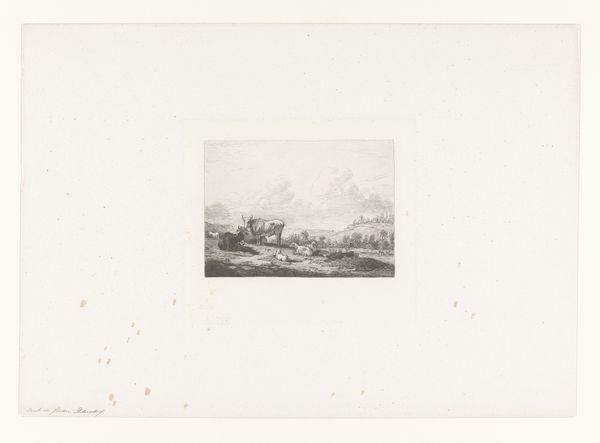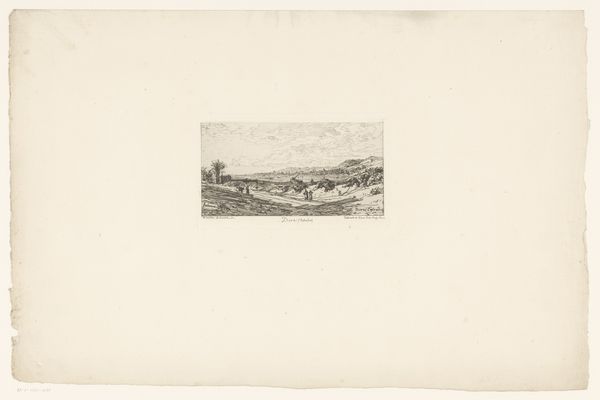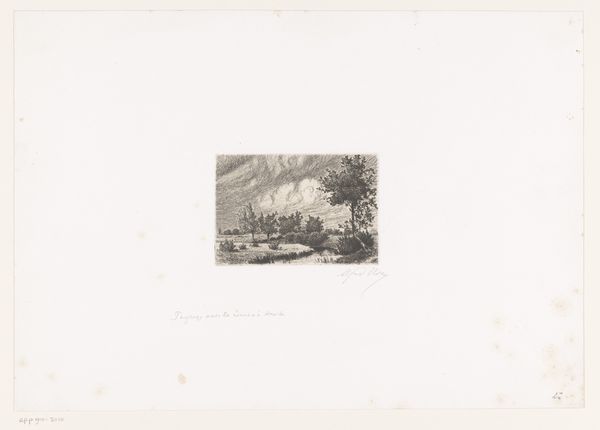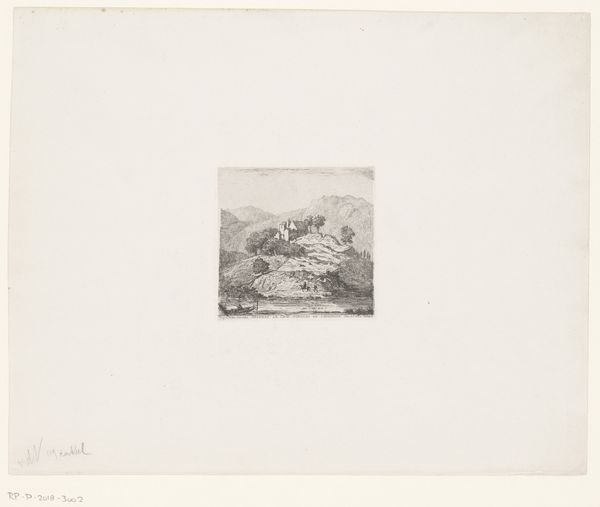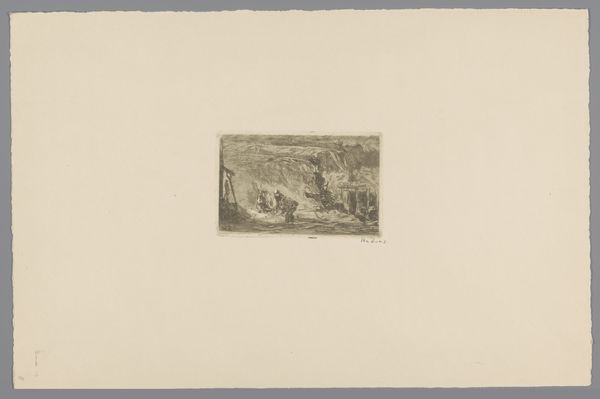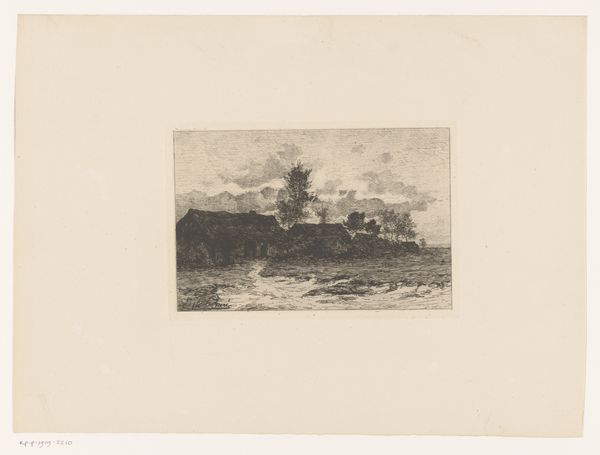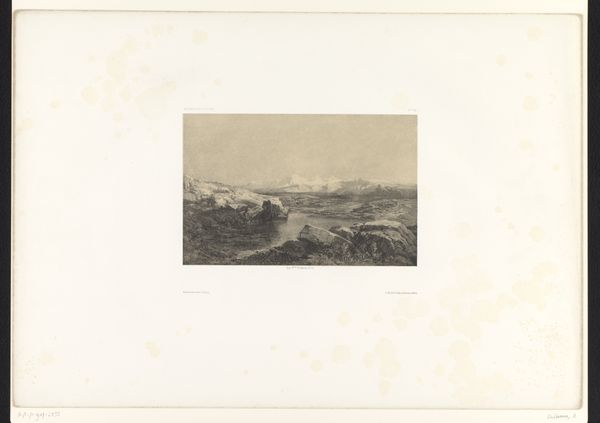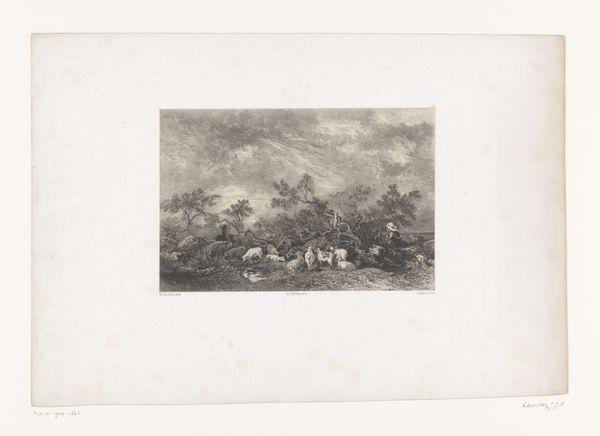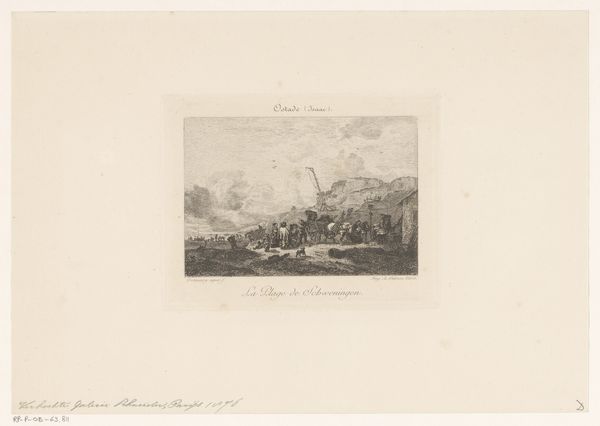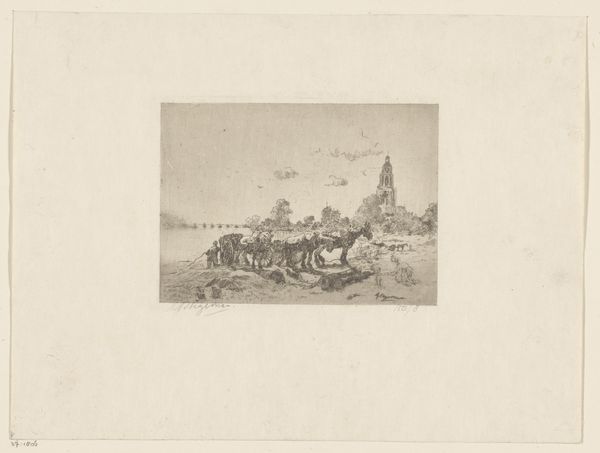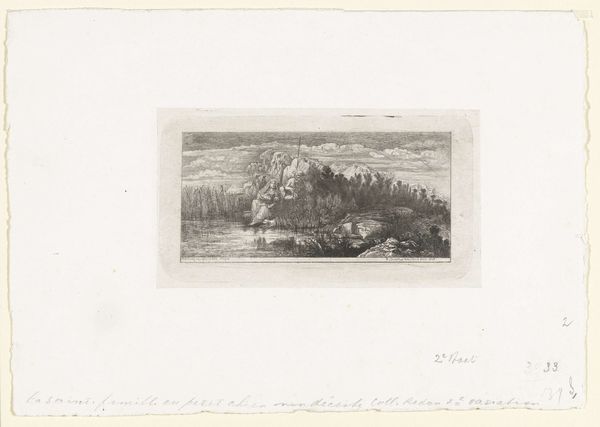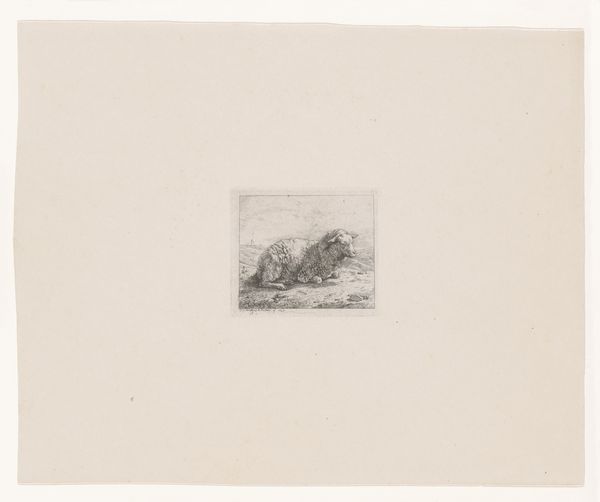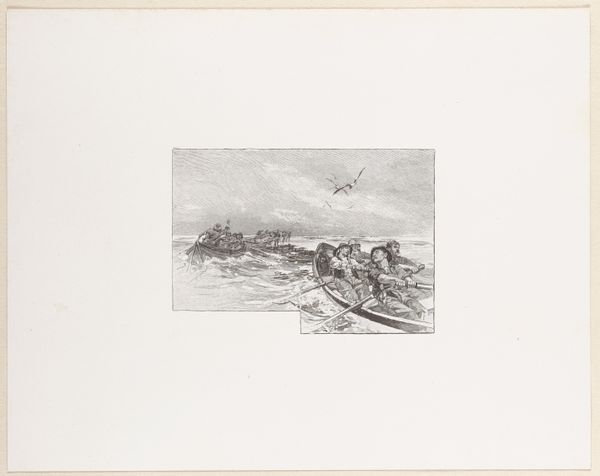
drawing, etching, plein-air
#
drawing
#
etching
#
plein-air
#
landscape
Dimensions: height 82 mm, width 108 mm
Copyright: Rijks Museum: Open Domain
Curator: Here we have "Landscape with a Pool on the Left," an etching crafted sometime between 1860 and 1910. Editor: The landscape feels somehow compressed, maybe even suffocating. All of that intense cross-hatching and tiny marks make this very contained composition feel weighty. Curator: This artist, Alfred Elsen, was working during a period that wrestled with humanity’s impact on nature. His choice to depict an untamed landscape with these particular textures and densities may speak to contemporary ideas concerning environmental preservation and romanticizing rural escape as a reaction to industrialization. Editor: Yes, and that emphasis on the surface qualities contributes significantly to my understanding. It appears as though he attempts to reconcile our need to simplify something so grand with the complexities of a seemingly simple image. I feel very closely focused, but the clouds show such amazing and simple hatching work. I appreciate his choices, especially the dense clusters and his clear skill and control of material. Curator: Exactly! Moreover, we see in Elsen's landscape a clear romanticization, possibly providing insight into the longing for a natural world far from burgeoning cities. I'd like to consider his inscription, and what it could mean in a sociopolitical environment filled with classism. He may be making statements about the environment, or wealth... What do you think about his work's accessibility? Editor: The intimate scale, contrasted with the powerful evocation of the elements, speaks to the paradoxical nature of art itself—trying to contain and communicate something beyond measure within set boundaries. The lack of horizon evokes how humanity felt during intense city expansion; no end in sight. Curator: In viewing the pool's stillness we also understand a snapshot in time, captured via meticulous etching on site, hinting toward plein-air tendencies. Perhaps his choices are pointing towards an awareness surrounding impermanence in natural wonders, and, maybe, a looming societal upheaval! Editor: It certainly inspires contemplation! This artwork highlights how the skillful manipulation of line and texture can compress ideas about reality. Curator: The capacity to see landscape represented and to understand these elements points us towards how much art and social context are needed to give work new meaning. Editor: A final statement about what an image's construction and material limitations can contain, expanding beyond itself.
Comments
No comments
Be the first to comment and join the conversation on the ultimate creative platform.
